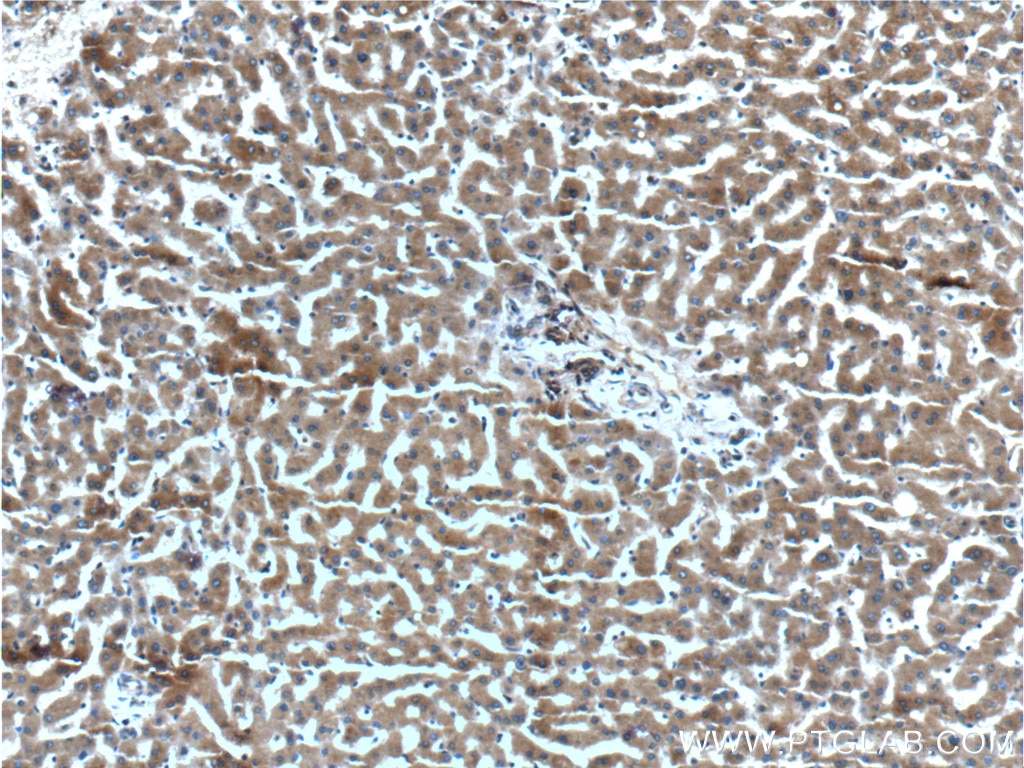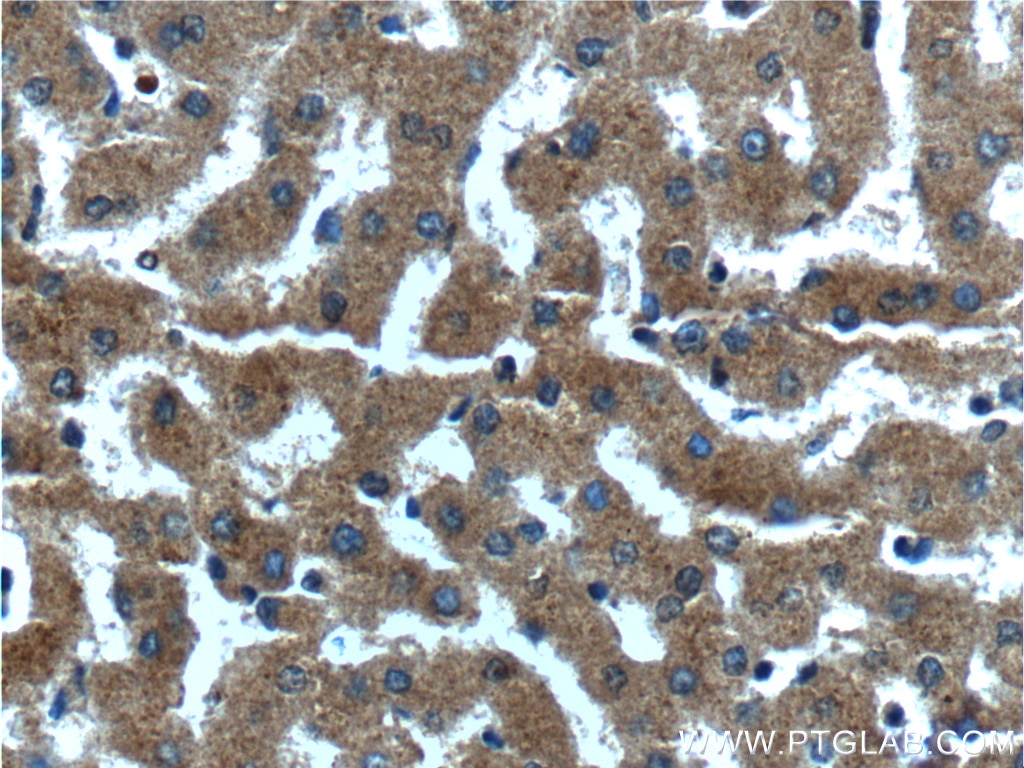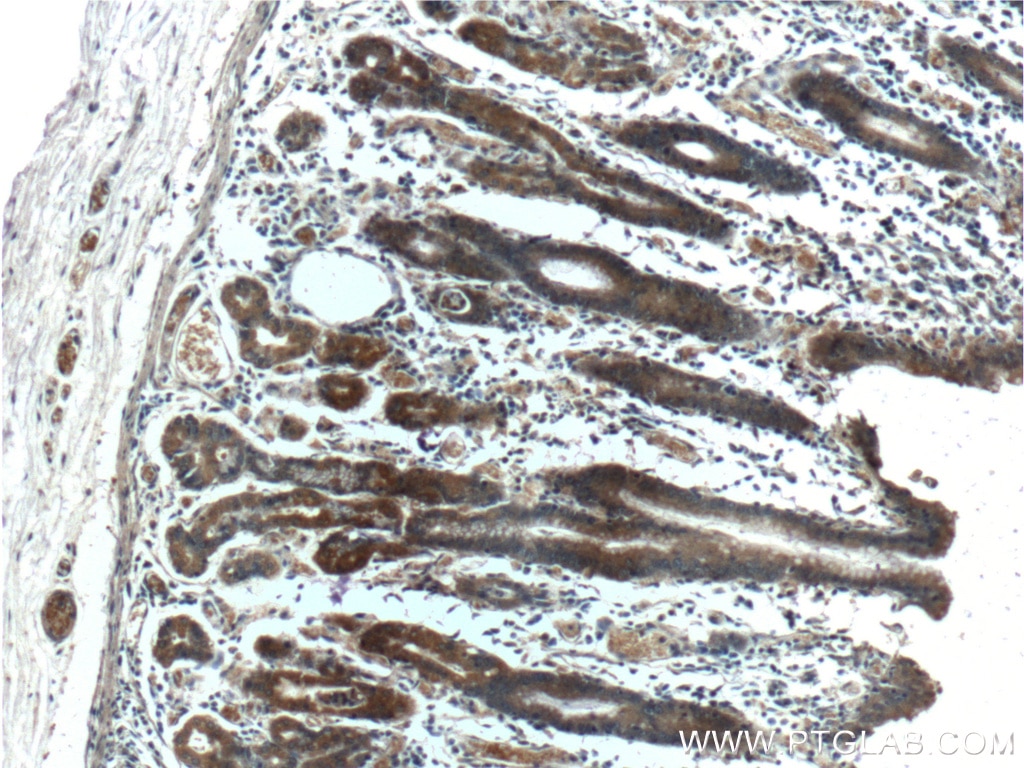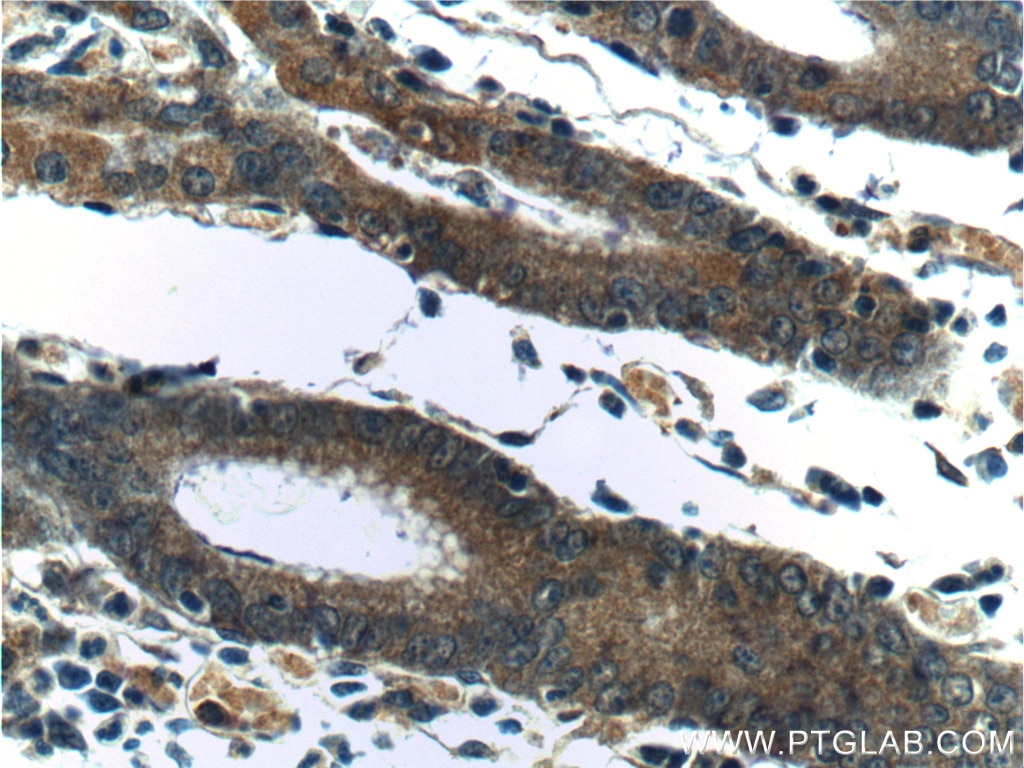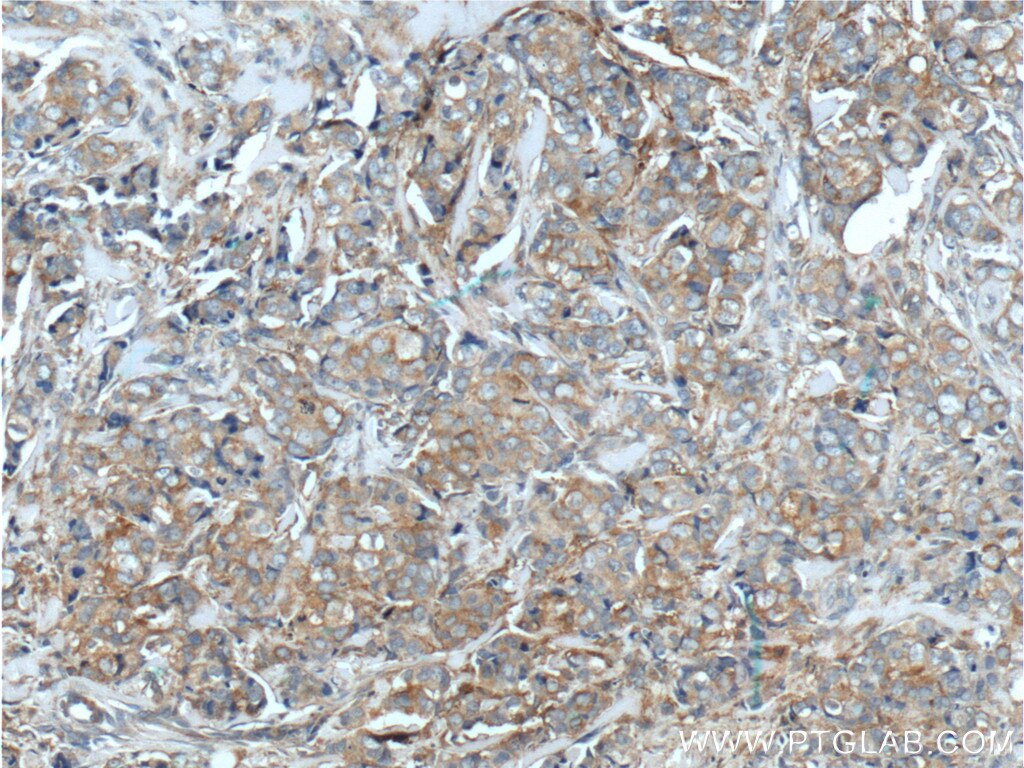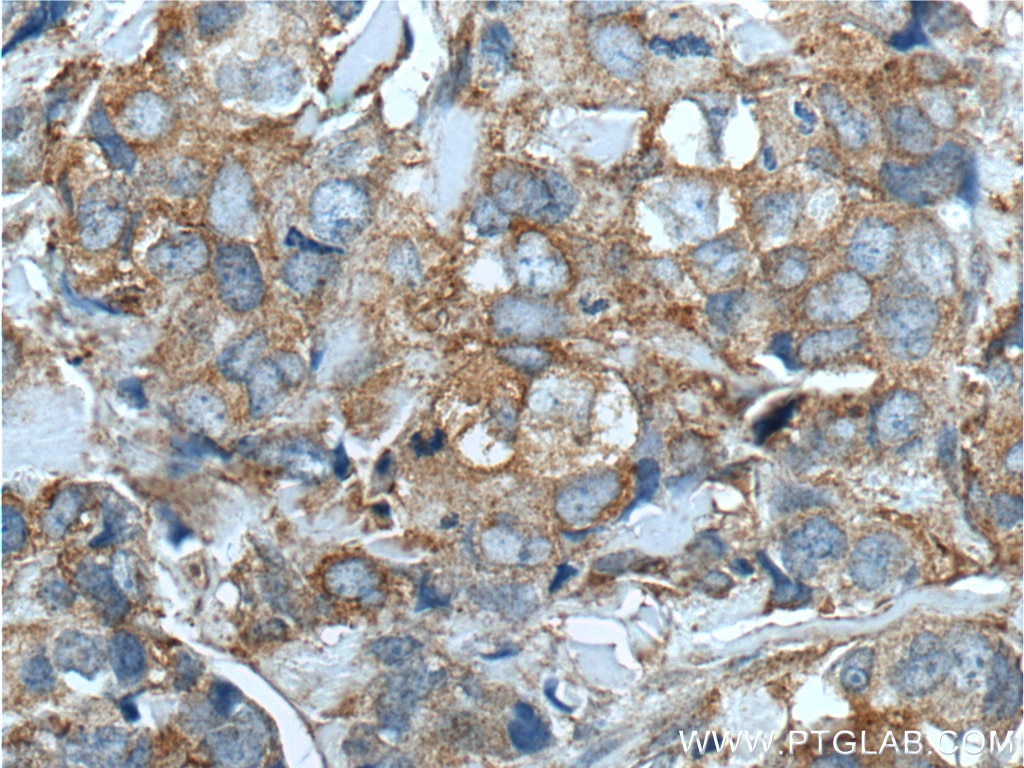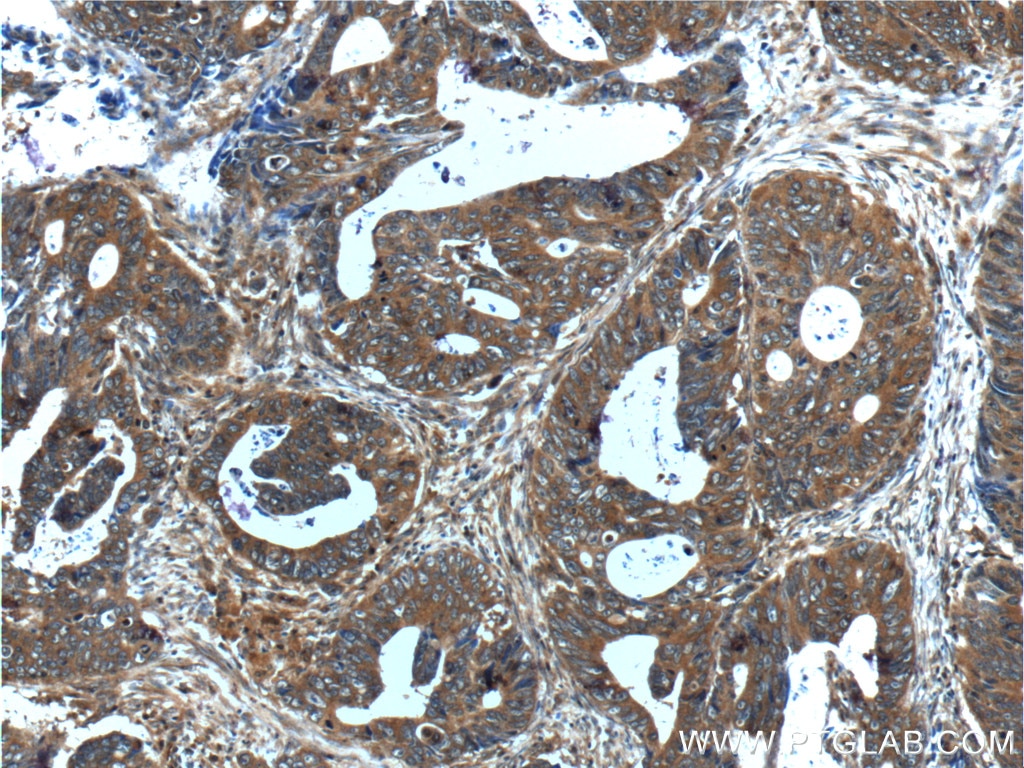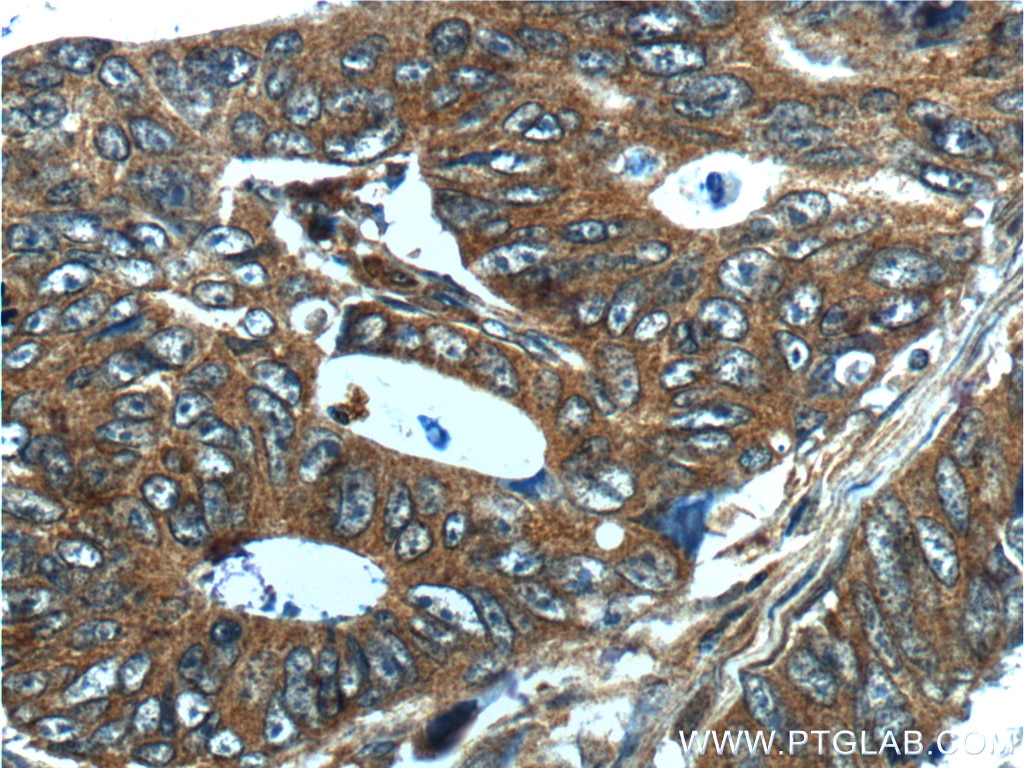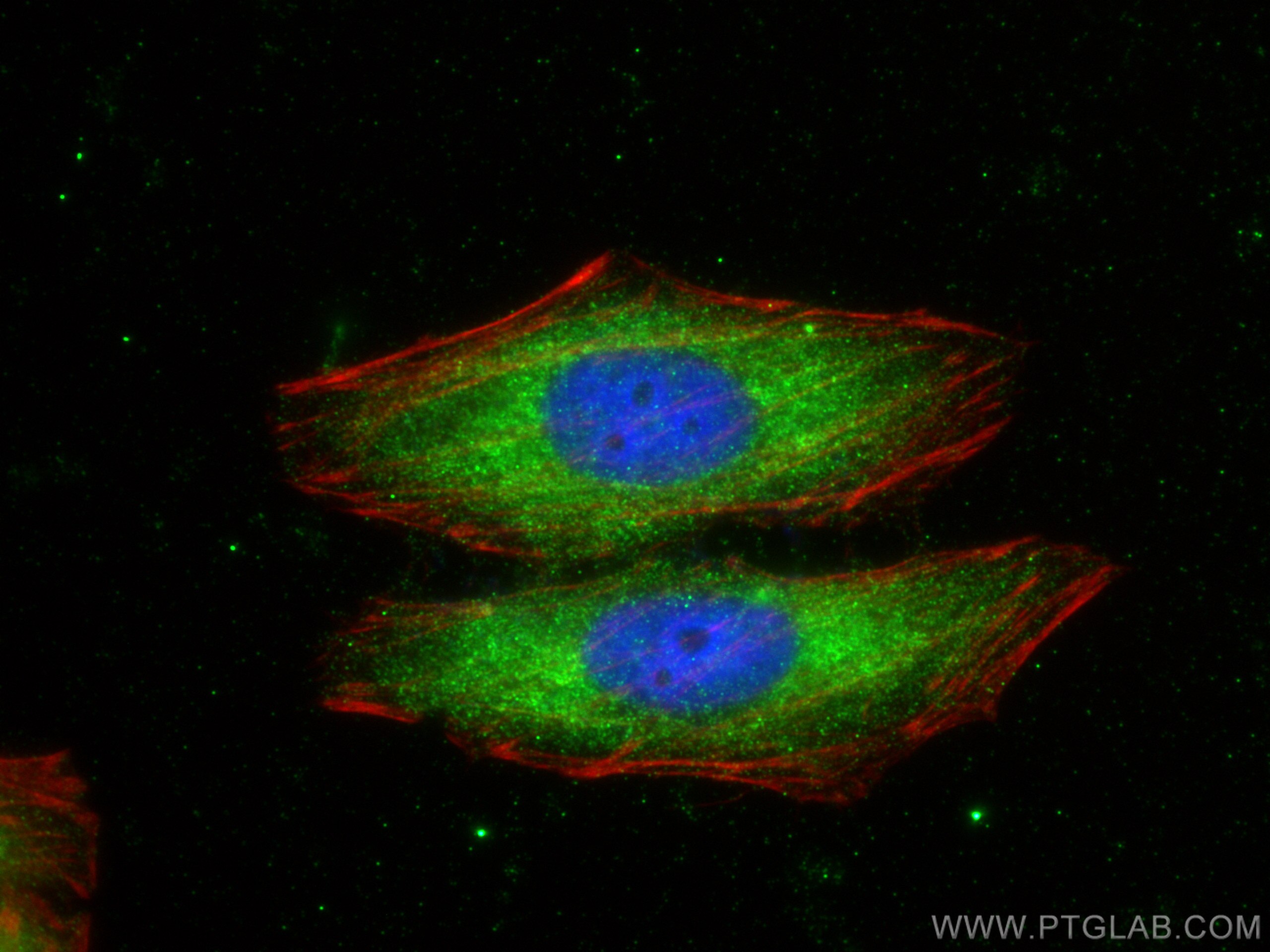- Phare
- Validé par KD/KO
Anticorps Polyclonal de lapin anti-CXCL14
CXCL14 Polyclonal Antibody for IF, IHC, ELISA
Hôte / Isotype
Lapin / IgG
Réactivité testée
Humain
Applications
IHC, IF/ICC, ELISA
Conjugaison
Non conjugué
N° de cat : 10468-1-AP
Synonymes
Galerie de données de validation
Applications testées
| Résultats positifs en IHC | tissu hépatique humain, tissu de cancer du côlon humain, tissu de cancer du sein humain, tissu d'estomac humain il est suggéré de démasquer l'antigène avec un tampon de TE buffer pH 9.0; (*) À défaut, 'le démasquage de l'antigène peut être 'effectué avec un tampon citrate pH 6,0. |
| Résultats positifs en IF/ICC | cellules HepG2, |
Dilution recommandée
| Application | Dilution |
|---|---|
| Immunohistochimie (IHC) | IHC : 1:50-1:500 |
| Immunofluorescence (IF)/ICC | IF/ICC : 1:200-1:800 |
| It is recommended that this reagent should be titrated in each testing system to obtain optimal results. | |
| Sample-dependent, check data in validation data gallery | |
Applications publiées
| KD/KO | See 2 publications below |
| IHC | See 5 publications below |
| IF | See 2 publications below |
Informations sur le produit
10468-1-AP cible CXCL14 dans les applications de IHC, IF/ICC, ELISA et montre une réactivité avec des échantillons Humain
| Réactivité | Humain |
| Réactivité citée | Humain |
| Hôte / Isotype | Lapin / IgG |
| Clonalité | Polyclonal |
| Type | Anticorps |
| Immunogène | CXCL14 Protéine recombinante Ag0747 |
| Nom complet | chemokine (C-X-C motif) ligand 14 |
| Masse moléculaire calculée | 13 kDa |
| Poids moléculaire observé | 13 kDa |
| Numéro d’acquisition GenBank | BC003513 |
| Symbole du gène | CXCL14 |
| Identification du gène (NCBI) | 9547 |
| Conjugaison | Non conjugué |
| Forme | Liquide |
| Méthode de purification | Purification par affinité contre l'antigène |
| Tampon de stockage | PBS avec azoture de sodium à 0,02 % et glycérol à 50 % pH 7,3 |
| Conditions de stockage | Stocker à -20°C. Stable pendant un an après l'expédition. L'aliquotage n'est pas nécessaire pour le stockage à -20oC Les 20ul contiennent 0,1% de BSA. |
Informations générales
CXCL 14 (C-X-C motif chemokine 14) is a small inducible cytokine, and may be a potent chemoattractant for neutrophils. CXCL14 possesses a destruction box (D-box) domain which acts as a recognition signal for degradation via the ubiquitin-proteasome pathway. CXCL14 is widely expressed in normal tissues including heart, brain, placenta, lung, liver, skeletal muscle, kidney and pancreas without inflammatory stimuli. It is dispensable for dendritic cell function and localization within peripheral tissues. In localized prostate cancer, CXCL14 mRNA was significantly upregulated and positively correlated with Gleason score.
Protocole
| Product Specific Protocols | |
|---|---|
| IHC protocol for CXCL14 antibody 10468-1-AP | Download protocol |
| IF protocol for CXCL14 antibody 10468-1-AP | Download protocol |
| Standard Protocols | |
|---|---|
| Click here to view our Standard Protocols |
Publications
| Species | Application | Title |
|---|---|---|
Transl Res Novel role of CXCL14 in modulating STAR expression in luteinized granulosa cells: implication for progesterone synthesis in PCOS patients. | ||
Dis Model Mech Loss of Ranbp2 in motor neurons causes the disruption of nucleocytoplasmic and chemokine signaling and proteostasis of hnRNPH3 and Mmp28, and the development of amyotrophic lateral sclerosis (ALS)-like syndromes. | ||
Front Pharmacol Aberrant ROS Mediate Cell Cycle and Motility in Colorectal Cancer Cells Through an Oncogenic CXCL14 Signaling Pathway.
| ||
Int Immunopharmacol Comprehensive analysis of the expression and prognostic value of CXC chemokines in colorectal cancer. | ||
Thyroid Iodide-induced chemokines and genes related to immunological function in cultured human thyroid follicles in the presence of thyrotropin. | ||
J Transl Med Chemokine CXCL14 is associated with prognosis in patients with colorectal carcinoma after curative resection.
|
